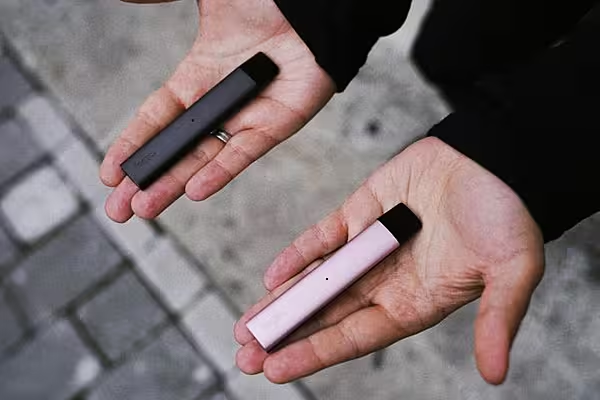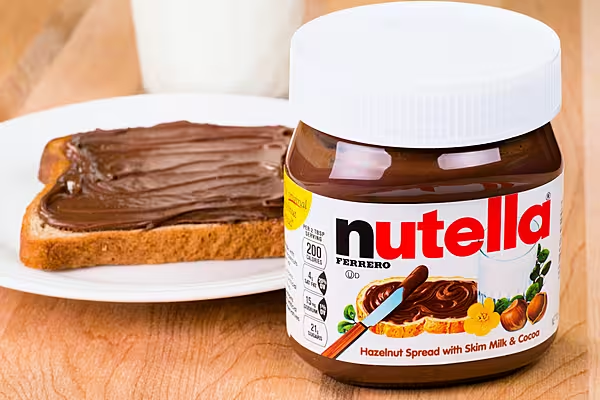You want a trip to Philip Morris International Inc. to feel like a visit to Marlboro Country. But the company’s Swiss research center, aka the Cube, just won’t play along.
Perched above crystalline Lake Neuchatel, southwest of Zurich, the glass hexahedron holds secrets to a future when, Philip Morris says, the world will be blissfully smoke-free.
That’s right: Philip Morris, of all companies, is telling smokers to quit. Here, beyond the sun-dappled reflecting pool, scientists in lab coats are searching for the Big Tobacco’s magic bullet: cigarette substitutes that will sell -- but won’t kill.
The push gained new urgency Friday with news that British American Tobacco Plc was offering $47 billion to buy out Reynolds American Inc., a move that would topple Philip Morris as the world’s largest publicly traded tobacco company.
The stakes could scarcely be higher. Tobacco claims more than 6 million lives every year. With smoking on the decline around the world, tobacco giants are racing to find new, supposedly safer products to feed nicotine addiction, even as they lean on old-fashioned cigarettes to sustain their profits.
Not Cold Turkey
Can Big Tobacco really kick cigarettes? More to the point, can it afford to?
“We can’t stop cold turkey,” says Andre Calantzopoulos, the chief executive officer of Philip Morris International. A crucial test could come in 2017 when his next big hope -- an iPhone-esque contraption that heats tobacco inside a cigarillo-size tube -- potentially hits the U.S.
For a QuickTake explainer on the war on tobacco, click here
Quitting old-fashioned smokes won’t be easy for tobacco companies or their stakeholders. Philip Morris turned out 850 billion cigarettes last year, generating net revenue of about $74 billion. All that tobacco pays off handsomely for global investors: Counting dividends, the company’s stock has returned roughly 70 percent over the past five years.
For Calantzopoulos, an electrical engineer by training and reformed smoker who’s spent his career at Philip Morris, the challenge will be to come up with new moneymakers as society radically redefines the way it uses tobacco. That, while BAT is grabbing the rest of Reynolds to help power its own push into so-called next generation products.
Seeking Smokers?
Critics are skeptical. They say Big Tobacco is simply doing what it’s always done: selling addictive products, with a gloss of feel-good marketing, while keeping tobacco at the heart of a $770 billion global industry.
“Philip Morris has demonstrated time and time again in the past its introduction of new products has led to more smokers,” says Matt Myers, president of the Campaign for Tobacco-Free Kids, a leading U.S. anti-smoking group. “Given their history, no one should ever trust what a tobacco company says it intends to do.”
Naysayers aside, what’s happening inside the Cube goes well beyond popular alternatives like electronic cigarettes, which exploded onto the scene in the late-2000s and made “vape” the Oxford Dictionaries 2014 word of the year.
Philip Morris doesn’t even have a word for what comes after “vape.” Its four-pronged strategy starts with something called iQOS, pronounced, EYE-kose.
Flip open the white- or blue-colored plastic iQOS case and you’ll find a heater that looks like a stubby pen. Into one end you insert what amount to munchkin-size cigarettes, called HEETS. The iQOS -- which some have said is an acronym for “I quit ordinary smoking” -- gently heats the tobacco without burning it, producing a warm, nicotine-laced aerosol.
New Name
It’s not smoking. Nor vaping. It’s, well -- Philip Morris isn’t quite sure what. Its best idea so far for what to call it: “HEETing.”
IQOS has been a hit in Japan and parts of Europe. After an extensive application process with U.S. health authorities, the product is expected to reach America next year, though without claims that it’s any safer than regular cigarettes. IQOS will have to pass a second hurdle with the Food and Drug Administration before it can be marketed as safer.
After HEETS comes TEEPS, a heat-not-burn product that looks pretty much like an old-fashioned cigarette. Here again, Philip Morris is relying on tobacco. But instead of lighting up the old way, users ignite a carbon tip that heats the tobacco.
The taste and nicotine intake of iQOS and TEEPS are closer to that of ordinary cigarettes than e-cigarettes, the company says, a stab at fixing smokers’ No. 1 complaint about early vapor products.
Nicotine Salt
A third device, STEEM, is a twist on a medical inhaler: It combines nicotine and a weak organic acid to produce nicotine salt, which is absorbed without vapor. A fourth, called MESH, is a more conventional e-cigarette using flavored nicotine liquid.
So far, Philip Morris has spent more than $3 billion on its post-cigarette push.
Whatever the concerns about cigarette substitutes, many agree e-cigs and the like are safer than ordinary smokes. But there are fears that all these new products may ultimately drive people back to conventional cigarettes -- or get nonsmokers hooked on the habit.
“These products are not zero-risk,” Calantzopoulos said.
Getting iQOS to America’s doorstep also has been a slog. The reduced-risk application to the Food and Drug Administration, expected in by the end of this year, is already more than 2 million pages. The application to get the product on shelves will likely be filed early next year.
“We are aware of the history of the tobacco industry, but our job is to take the sciences they have submitted and objectively evaluate what their data is and how far it goes to addressing the mandatory statutory standards,” said Mitch Zeller, director for the FDA’s Center for Tobacco Products.
New-Product Race
Philip Morris isn’t running this race alone. BAT, Reynolds, Altria Group Inc. and Japan Tobacco Inc. are all working on a variety of products.
“The race is not money, but time,” Calantzopoulos said.
Here in Switzerland, the Philip Morris campus isn’t smoke-free. But the company is making an effort to project a post-cigarette image. The main building has three sections: Earth, Wind and Air. Fire is missing. Indeed, e-cigarettes and iQOS have caught on among the company’s former smokers.
Jacek Olczak, the chief financial officer, said iQOS helped him quit regular cigarettes.
“I’m extremely happy,” he said. “My company solves my own problem, and I can make money off of it.”
Nearly everyone in the industry acknowledges that the road ahead for Big Tobacco will be long. Public health officials, and many ordinary people, are wary of the industry and its intentions.
So change won’t be easy. As Calantzopoulos put it: “Decades of history are not going to change in one afternoon.”
News by Bloomberg, edited by ESM. To subscribe to ESM: The European Supermarket Magazine, click here.














